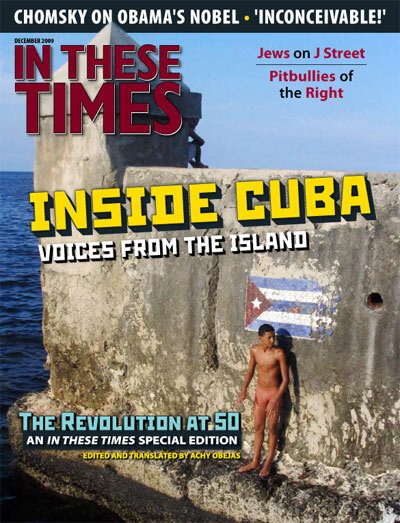Early on a Friday morning, I switched on my radio to listen to the news as I slowly woke up. What a peculiar dream … President Barack Obama was awarded the Nobel Peace Prize. Then I realized. I was awake. He actually was this year’s recipient for his “vision of and work for a world without nuclear weapons.”
I’m acquainted with folks who have labored for such a vision for quite a while. Twenty-five years ago, several friends and I entered a weapons factory in Orlando, Fla., on Easter morning. We disarmed elements of a Pershing II missile, then being deployed in Europe and became known as the Pershing Plowshares. By midsummer the eight of us were on our way to federal prison, sentenced to three years.
Our action, like many Plowshares actions, concentrated on first strike nuclear weapons designed not for deterrence, but for a disabling assault on the Soviet Union. By virtue of deployment of first strike missiles by the U.S. and the Soviet’s response in kind, the Bulletin of the Atomic Scientists’ Doomsday Clock was set at six minutes to midnight in the early 1980s. This was the closest we were to nuclear calamity since the Cuban missile crisis nearly 20 years earlier.
During the 1980s, much of the disarmament movement put great effort into understanding the substance of U.S. nuclear weapons strategy and technology in order to stand against it. At our trial, we were able to discuss the history of the Pershing II missile, from 1962 when it was a twinkle in Robert McNamara’s eye to its deployment in Europe in 1983. We talked about Martin Marietta’s profiteering from it (the company is now Lockheed Martin, the world’s largest military contractor and still a major player in nuclear weapons research and development). With such knowledge, the nuclear abolition movement was able not only to advocate against these policies, but to educate and mobilize large numbers of citizens to nonviolently resist the entire first strike weapons agenda.
The Reagan administration, hawkish as it was, had its hands full trying to maintain momentum for such weapons. A worldwide public debate over the politics and morality of nuclear weapons ensued, forcing Ronald Reagan to negotiate an agreement to destroy nuclear weapons with Michael Gorbachev. The result was the 1987 abolition of Euromissiles on both sides, unprecedented in the history of the nuclear arms race. The Pershing II, designed for a 20-year lifespan, was consigned to the scrap heap after only four.
These accomplishments came from widespread grassroots fervor based on a radical vision of disarmament. Today, new challenges confront us.
In the early 1990s, with the dissolution of the Soviet Union, the Cold War was over and a “peace dividend” replaced the bloated military budget our country had sustained for decades. Then President H.W. Bush sent 500,000 troops to the Arabian Peninsula, unleashing an air war against Iraq. In just six weeks, this eclipsed all the bombing tonnage dropped on Vietnam in more than a decade.
Attention to the stealthy but steady advances in weaponry and hope for their reversal advance has seriously diminished from its apogee in the 1980s. But, as the Nobel committee recognizes, Obama has renewed the conversation with speeches on arms control promoting new warhead reductions, even envisioning their eventual elimination.
But arms control is not adequate. We need to understand how nuclear strategy and dangerous new advances in space weaponry combined threaten planetary devastation. As the sole superpower, the United States employs that threat to leverage domination of the world. Would Obama jeopardize that arrangement? Hard to imagine.
Still, his Nobel award is our opportunity. For the first time in years, changing our country’s nuclear policy is on the table.
That can be our catalyst to build a new visionary peace movement. We need the skills and knowledge of vigorous policy analysts, a widespread grassroots movement objecting to these threats to life, and a nonviolent resistance movement that can impede the machinery of death and ward off omnicide.
We make a mistake if we invest the president with our hopes and wait for him to give us back a mere taste of the possibilities. Really, the hope is ours to employ, to fashion the disarmed world we want – the world to which we have a right. The question we need to answer: “Is it in us?”






